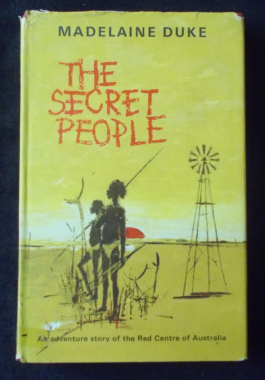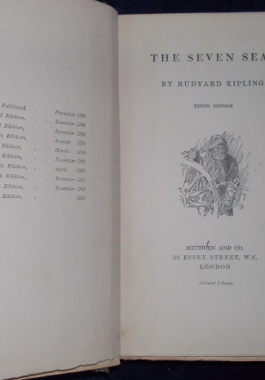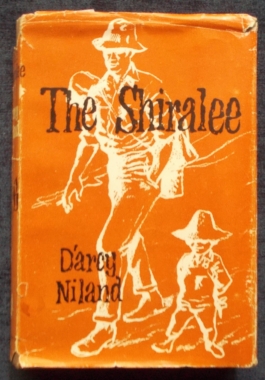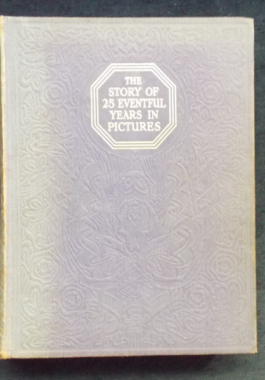-
 Four men set out on camel-back to cross the starkly beautiful Red Centre. Two of the men have mysterious pasts and their stories are woven into this novel that reveals dramatically the indigenous way of life. Illustrated by Mona Killpack.
Four men set out on camel-back to cross the starkly beautiful Red Centre. Two of the men have mysterious pasts and their stories are woven into this novel that reveals dramatically the indigenous way of life. Illustrated by Mona Killpack. -

 The Seven Seas is a series of poems centred on Britain’s role in colonialism and Empire building. With reverberating lyrics and powerful imagery, Kipling writes of the ruthless means that were often employed to add nations to the glorious Empire, and the subsequent effects upon these colonised nations. Though disturbing and unsettling in theme, Kipling’s lyrical dexterity makes these poems strangely compelling reading.
The Seven Seas is a series of poems centred on Britain’s role in colonialism and Empire building. With reverberating lyrics and powerful imagery, Kipling writes of the ruthless means that were often employed to add nations to the glorious Empire, and the subsequent effects upon these colonised nations. Though disturbing and unsettling in theme, Kipling’s lyrical dexterity makes these poems strangely compelling reading. -
 Of all the rough frontier towns that stretched in a ragged line along the eastern bank of the Missouri, Council Bluffs seemed most alive with the robust spirit of the time. There the crowd was most motley; there the leaping pulse could best be felt; there was the very vortex of the mad maelstrom of passionate hope, desire, and purpose. An American frontier story about the settling of Nebraska in 1854.
Of all the rough frontier towns that stretched in a ragged line along the eastern bank of the Missouri, Council Bluffs seemed most alive with the robust spirit of the time. There the crowd was most motley; there the leaping pulse could best be felt; there was the very vortex of the mad maelstrom of passionate hope, desire, and purpose. An American frontier story about the settling of Nebraska in 1854. -
 De Vaca was one of hundreds of men who left Spain in 1527 on an expedition headed by Panfilo de Narvaez. The mission was to explore Florida. This is the eyewitness account of how an expedition of over 600 men and five ships was reduced to a band of four half-mad survivors who staggered into Mexico City, having unintentionally become the first Europeans to cross the American Southwest via Texas, Ne Mexico and Arizona. It is the quintessential travel horror story.
De Vaca was one of hundreds of men who left Spain in 1527 on an expedition headed by Panfilo de Narvaez. The mission was to explore Florida. This is the eyewitness account of how an expedition of over 600 men and five ships was reduced to a band of four half-mad survivors who staggered into Mexico City, having unintentionally become the first Europeans to cross the American Southwest via Texas, Ne Mexico and Arizona. It is the quintessential travel horror story. -

The Shiralee: Darcy Niland
$10.00A shiralee is a swag, a burden - and Macauley tramps through the back towns of New South Wales, looking for work, with his swag and his shiralee - his four year old daughter, Buster, taken from her loose-living mother by Macauley in a fit of vengeful rage. Buster is a bundle of loyalty, fortitude and natural childishness, yet she is no joy to Macauley, who treats her with uncompromising firmness. She must go on walking with him; she must stop her chattering when he wants quiet; she must not complain. But he has a grudging affection for her, an affection which grows without his realising it - until it is threatened. Now, not only must he admit his love for his daughter, his shiralee, but he must also realise how many true friends he really has. Here are other very real Australian characters: shopkeepers, stock agents, publicans, shearers, ex-fighters - all set against the Australian bush background of the 1950s. Niland's first novel, filmed twice. -

 Those were eventful years for King George V and the world at large; the Great War that should have ended all wars was fought and won by the Allies; the motorcar took over the streets; the stock market rose and fell with a resounding crash; Viscountess Astor became the first woman MP in England; hemlines rose above the knee and plane travel became passè. A fabulous pictorial history of 25 years that really did change the world.
Those were eventful years for King George V and the world at large; the Great War that should have ended all wars was fought and won by the Allies; the motorcar took over the streets; the stock market rose and fell with a resounding crash; Viscountess Astor became the first woman MP in England; hemlines rose above the knee and plane travel became passè. A fabulous pictorial history of 25 years that really did change the world. -
 Stephen Rudge, one of a rowdy gang of boys in a colliery village, is literally knocked head over heels into the Scouts by the Scoutmaster's car. He had been getting into mischief out of boredom and selfishness; as a Scout he finds life much more interesting and purposeful, with plenty of adventures and one or two steps backwards as he battles to get on the 'right path'.
Stephen Rudge, one of a rowdy gang of boys in a colliery village, is literally knocked head over heels into the Scouts by the Scoutmaster's car. He had been getting into mischief out of boredom and selfishness; as a Scout he finds life much more interesting and purposeful, with plenty of adventures and one or two steps backwards as he battles to get on the 'right path'. -

 Hudson explores the forces responsible for bringing about the Renaissance, which he describes as...the West's transition from the medieval to the modern world. Voyages of discovery, inventions, the revival of classical learning and the advent of science contribute to the intellectual upheavals of this creative period which are reflected in its literature and art. Hudson focuses on the one thread of continuity which he sees as both the seed and the fruit of this exciting era: the awakening of secular humanism and the emergence of the individual. Chapters: The Renaissance In General; The Age Of Invention And Discovery; The Revival Of Learning; The Renaissance In Religion: The Reformation; Science And Philosophy; Art, Literature And Education. Illustrated.
Hudson explores the forces responsible for bringing about the Renaissance, which he describes as...the West's transition from the medieval to the modern world. Voyages of discovery, inventions, the revival of classical learning and the advent of science contribute to the intellectual upheavals of this creative period which are reflected in its literature and art. Hudson focuses on the one thread of continuity which he sees as both the seed and the fruit of this exciting era: the awakening of secular humanism and the emergence of the individual. Chapters: The Renaissance In General; The Age Of Invention And Discovery; The Revival Of Learning; The Renaissance In Religion: The Reformation; Science And Philosophy; Art, Literature And Education. Illustrated. -
 A Tale of Rome, in the time of Marcus Aurelius...very few major historical characters will appear here. This story concerns itself with the back streets of Rome; the artisans, the growers and the makers; where hucksters and tricksters rubs shoulders with priests and philosophers. The Encyclopedia of the Novel describes it as a 'playfully comic' depiction of Ancient Rome. So don't worry too much about any historical inaccuracies you may find, it's all in good fun!
A Tale of Rome, in the time of Marcus Aurelius...very few major historical characters will appear here. This story concerns itself with the back streets of Rome; the artisans, the growers and the makers; where hucksters and tricksters rubs shoulders with priests and philosophers. The Encyclopedia of the Novel describes it as a 'playfully comic' depiction of Ancient Rome. So don't worry too much about any historical inaccuracies you may find, it's all in good fun!


